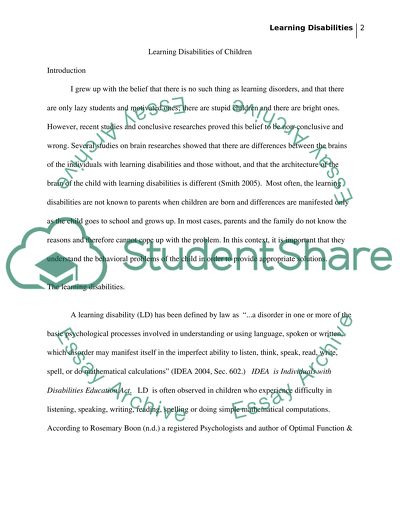Cite this document
(“Learning disabilities of children Research Paper”, n.d.)
Retrieved from https://studentshare.org/education/1573432-learning-disabilities-of-children
Retrieved from https://studentshare.org/education/1573432-learning-disabilities-of-children
(Learning Disabilities of Children Research Paper)
https://studentshare.org/education/1573432-learning-disabilities-of-children.
https://studentshare.org/education/1573432-learning-disabilities-of-children.
“Learning Disabilities of Children Research Paper”, n.d. https://studentshare.org/education/1573432-learning-disabilities-of-children.


